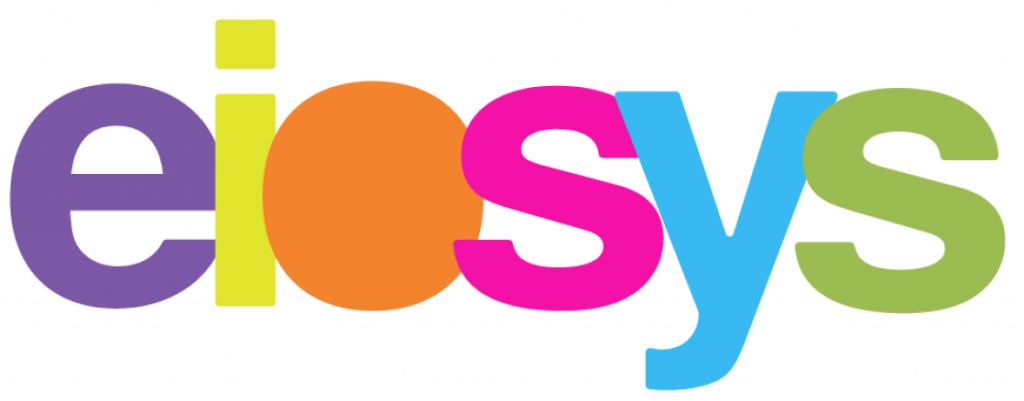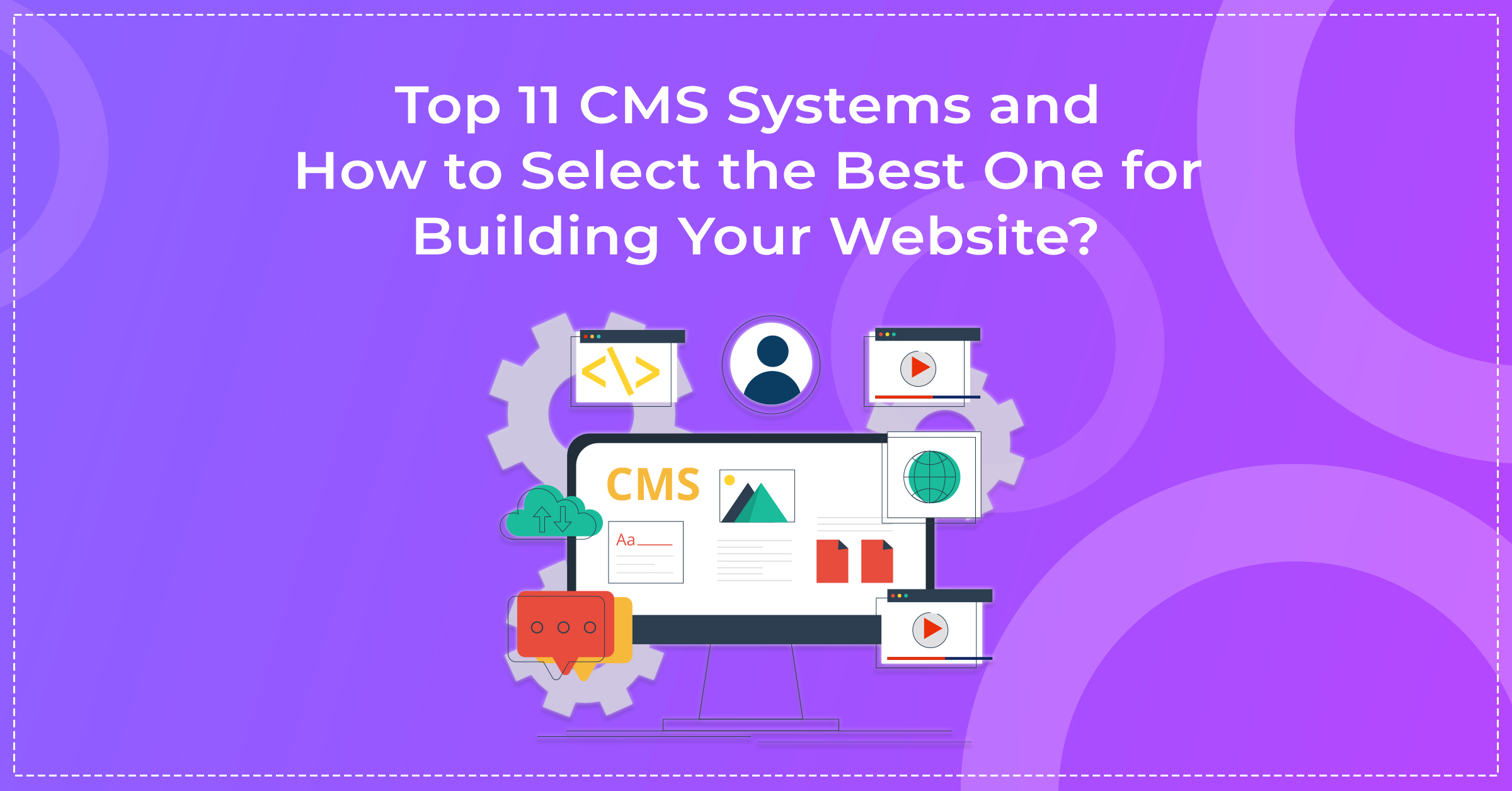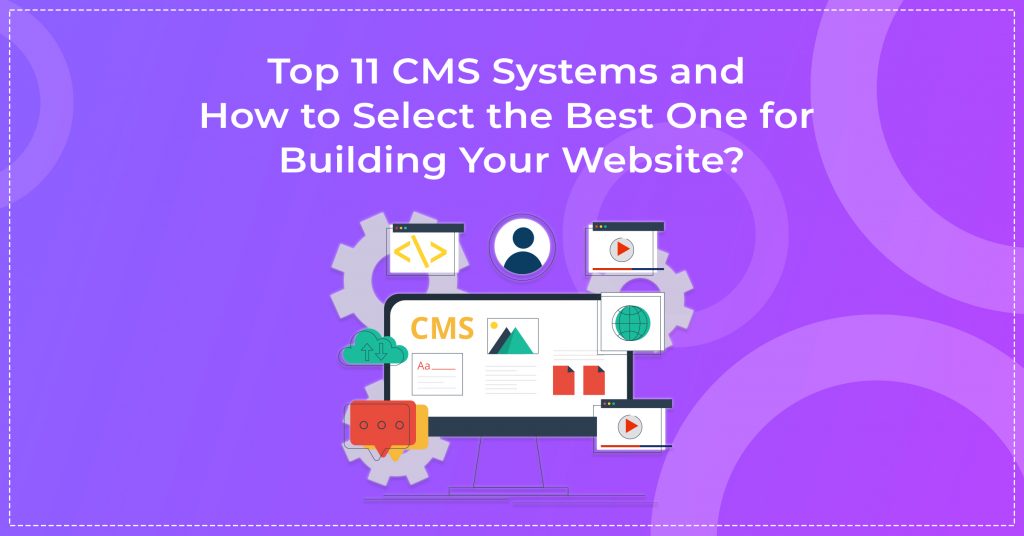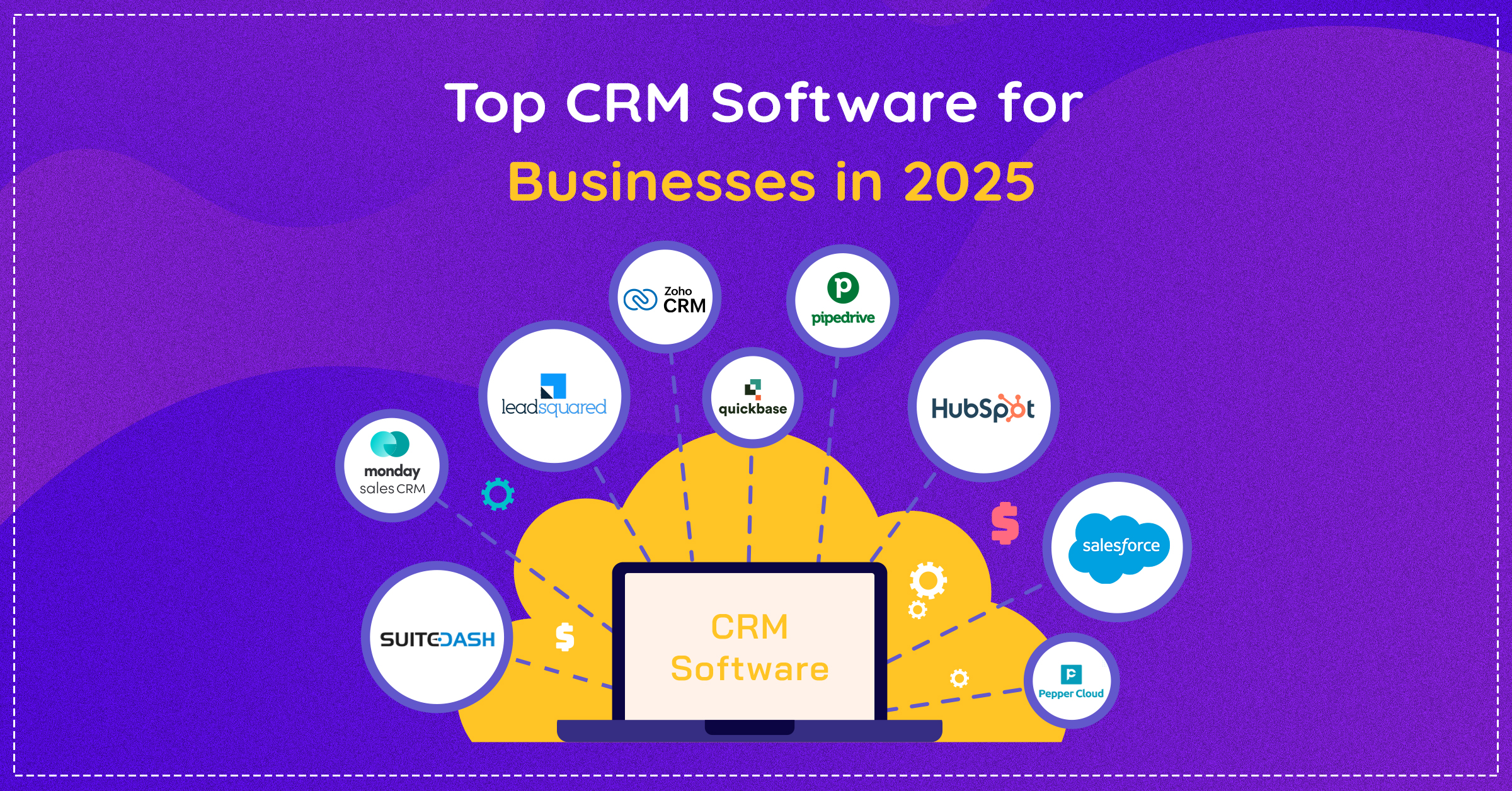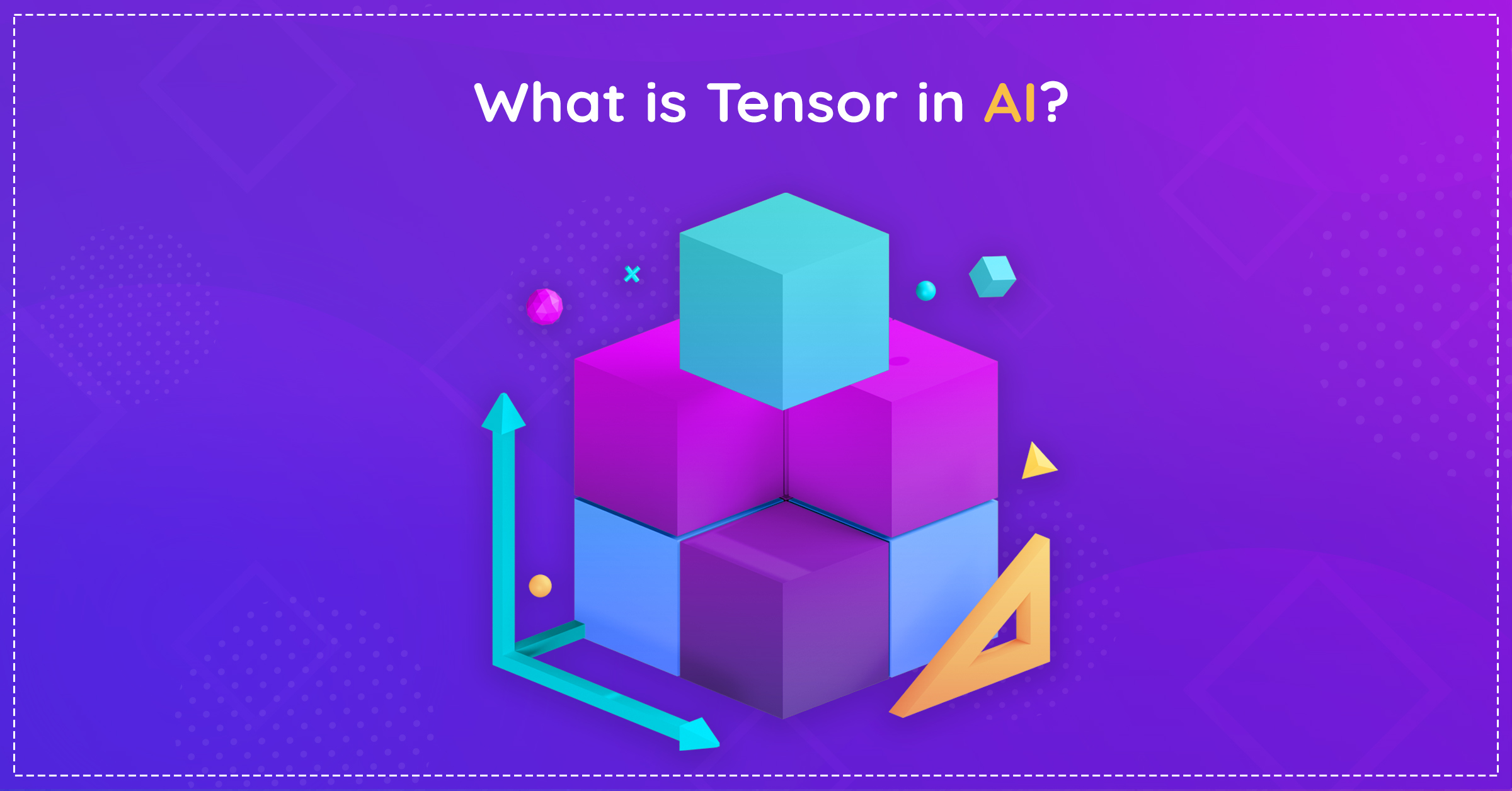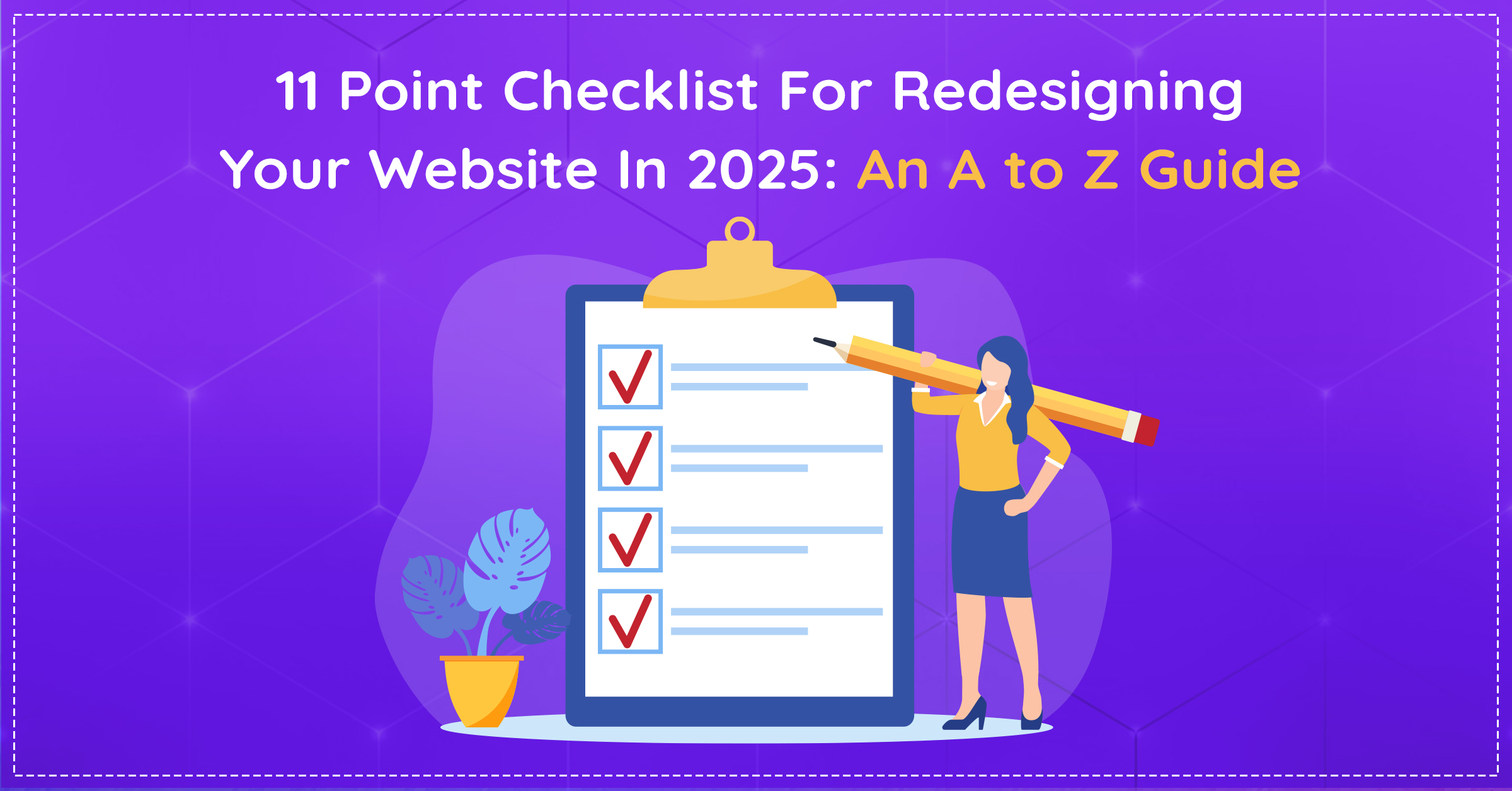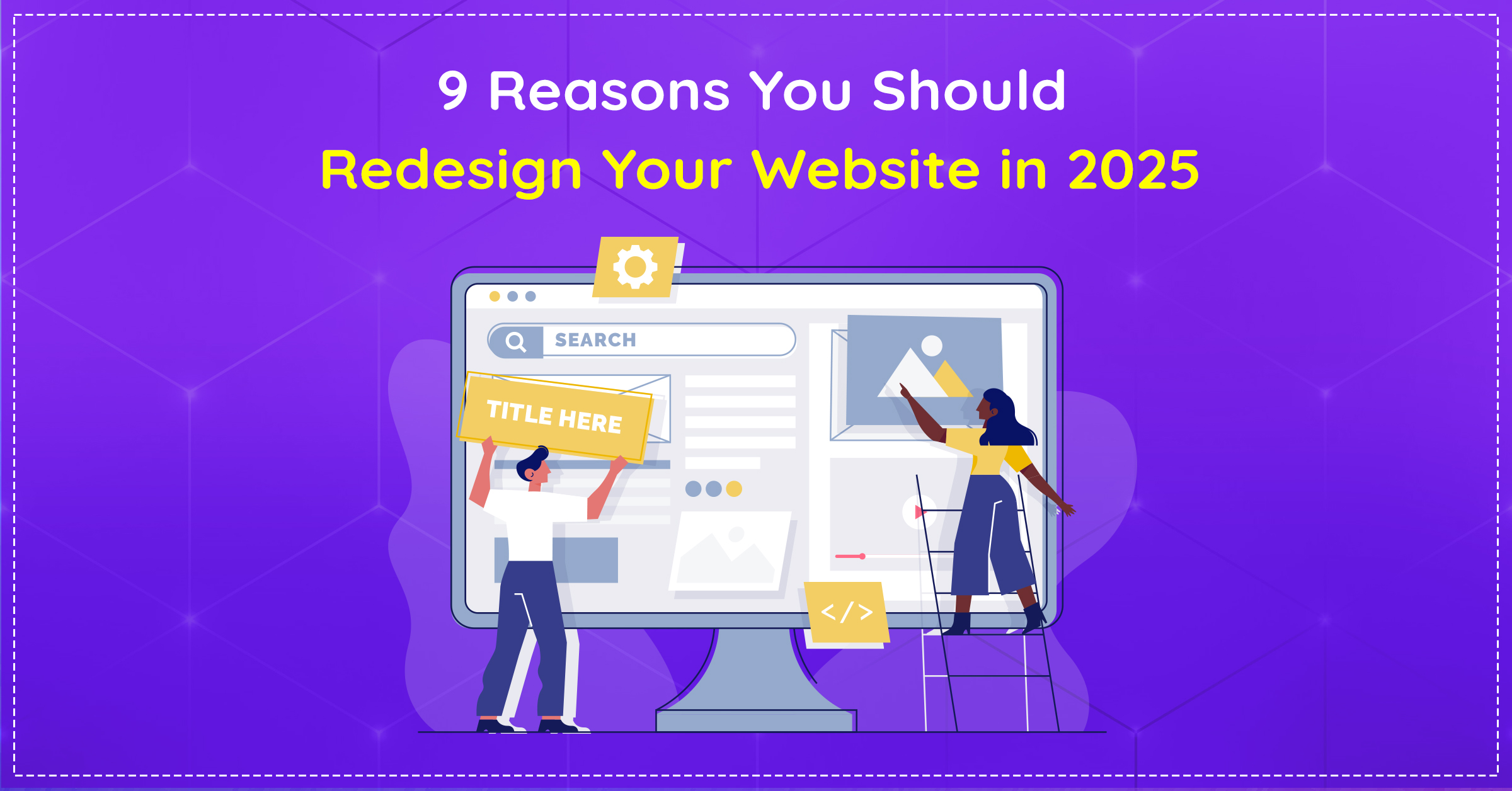Let’s have a look at the Top CMS Systems and How to Select the Best One for Building Your Website?
If you’re not aware of the ABC of coding and still want to create a website from scratch, content management systems (CMS) are your ultimate saviour.
Before we dig into the details, let’s admit it; the market is filled with tons of CMS options and a simple search on Google for ‘the best CMS’ can make you lose your mind. In such a situation, how do you select one that suits your business? Well, this is what the blog is all about. Apart from that, we’ll also give you a list of the top CMS platforms with their pros and cons to help you make the right choice.
So, let’s start with the basics,
What is a CMS Platform?
Let’s take an example to understand this.
The blog that you’re reading right now is on a website. Traditionally, to create every web page one has to be well-versed in programming languages such as HTML, Javascript, CSS, Python, PHP, etc and write a lot of code that goes in the back end of any functional website. However, with the advent of CMS platforms, this task has been made a lot easier.
A CMS platform is software that allows you to create a website and manage content without much hassles. That means, yes, you don’t have to learn programming languages or write code.
How to Select the Right CMS Platform?
There are a few things which you must look out for in a CMS before making the big decision.
Ease of Use
Of course, you want a CMS platform with a simple interface that allows you to create and edit content with little hassles, don’t you? Typically, an easy-to-use CMS must be quick to respond, straightforward, and enable you to edit content even after publishing. A drag-and-drop feature may also come in handy to add multiple elements to your page.
Cost
Some CMS platforms are free to use and may charge you some amount for using certain extensions, designs or web hosting services. Thus, you need to look out for any costs that might be involved in using a CMS platform to save yourself from any unpleasant experiences later on.
Design
A good CMS platform not only offers a bunch of web design templates but also gives the user the autonomy to tweak and customise them as per their needs.
Data Portability
In case you want to switch to some other CMS platform, a good CMS platform will allow you to easily transfer data without the fear of losing them.
Moving on to the most awaited section, the top 10 CMS platforms.
Top 10 CMS Systems in the Market
1. WordPress
As per some recent stats, around 45% of all websites on the internet are powered by WordPress.
Please note, here we’re referring to WordPress.org which is a CMS platform originally developed for blogging but today, used by many kinds of businesses. On the other hand, WordPress.com is a blog hosting platform. Also, with wordpress.org you need to host your website by yourself, which means, you would have to find a suitable WP hosting provider.
What makes WP the most preferred CMS among people? Let’s check out some pros and cons.
Pros:
- WP allows you to create exceptional web pages without any technical or coding skills. The WP Block Editor is your one-stop destination to create and edit intriguing web pages.
- It gives you the freedom to build any sort of website be it an online store, corporate website, membership site and so on.
- The best part of using WordPress is it helps immensely with Search Engine Optimisation (SEO). There are plenty of SEO plugins such as Yoast SEO, Rank Math, Semrush, Ahrefs, MonsterInsights, etc that can help you to take your SEO game to the next level.
Cons:
- As mentioned earlier, WP doesn’t offer hosting or domain names. So, you’ll have to manage them on your own apart from looking after security and backups.
Cost:
WordPress is a free CMS platform however, you’ll need to pay for a hosting service, domain name and certain add-on plugins.
We have a detailed blog on – Why You Should Use WordPress to Build a Website?. Do check it out!
2. WooCommerce
Technically, it’s not a CMS platform because to use WooCommerce you’ll need WordPress. As per Statista, in the US, WooCommerce had the second-highest share of eCommerce software platforms in the year 2023.
Let’s check out the pros and cons of WooCommerce.
Pros
- WooCommerce gives you the autonomy to design your website the way you want, sell what you want including earning through affiliate links, manage your inventories, and set a sound payment system in place.
- It comes with a bunch of plugins a.k.a WooCommerce Plugins that allow you to improve the functionality of your website.
Cons
- Again, using WooCommerce can be a bit daunting for a beginner, especially with the loads of options available.
- Although WooCommerce works with pretty much every WP theme, it’s always better to stick to the themes made especially for WooCommerce to get extended support.
Cost:
Another good news is that WooCommerce is free. However, you’ll have to invest in a hosting service and domain name.
We also have a comparison blog – Woocommerce v/s Shopify: A Comprehensive Comparison
3. Joomla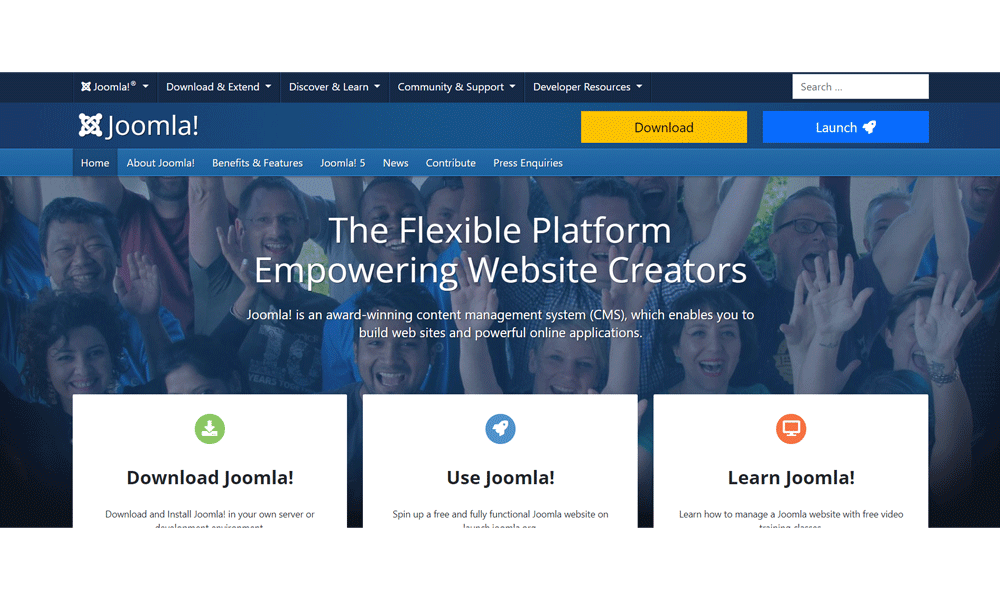
This one is for seasoned website developers so, if you’re looking for a beginner-friendly CMS platform, you might want to skip this. Like the two above, it is also a free and open-source CMS platform that comes with plenty of templates and extension services. However, you would need a hosting and a domain name to use Joomla.
Below are some of the pros and cons of Joomla:
Pros:
- Joomla gives you a lot of autonomy to create something unique or even complicated. That’s the reason, it is most preferred for creating eCommerce sites.
- Since it’s an open-source CMS, there’s a lot of community support available to help you in bouts of confusion.
Cons:
- If you’ve been a WordPress user, switching to Joomla may not be a wise choice. Why? Compared to WP, Joomla offers far fewer templates, themes and extension services.
- Also, you may encounter compatibility issues in Joomla if you have a bunch of extensions and modules installed.
Cost:
Similar to the above two on our list, Joomla is free too. However, as noted earlier, you must pay for a hosting service and domain name.
4. Drupal
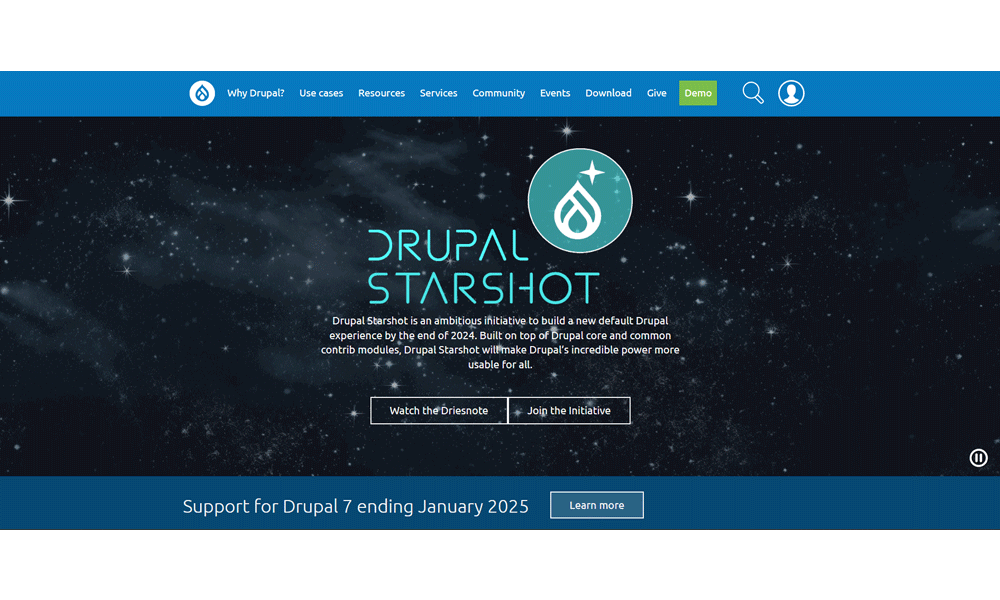
As per one stat, globally Drupal acquires a market share of 1.90%. It is behind some powerful websites including Tesla and NASA. However, truth be told, it’s not a good option for beginners. Thus, if you’re willing to create a site using this CMS, you’ll most probably need the help of a web developer.
Drupal, like those above in the list, is an open-source CMS that allows you to create a highly customised site.
Here are some of the pros and cons of Drupal CMS:
Pros:
- Perhaps the reason why it’s used by big institutions like NASA is it makes user management a cup of tea. You can add a lot of people to your team, create roles and specify permission so that synergized teamwork is ensured.
- Similarly, it allows you to add and edit content flexibly.
Cons:
- The highly customised themes of Drupal are on the expensive side.
- As noted earlier, it is not a beginner-friendly option.
Cost:
Another free CMS platform that requires a hosting service and domain name to run.
5. Wix
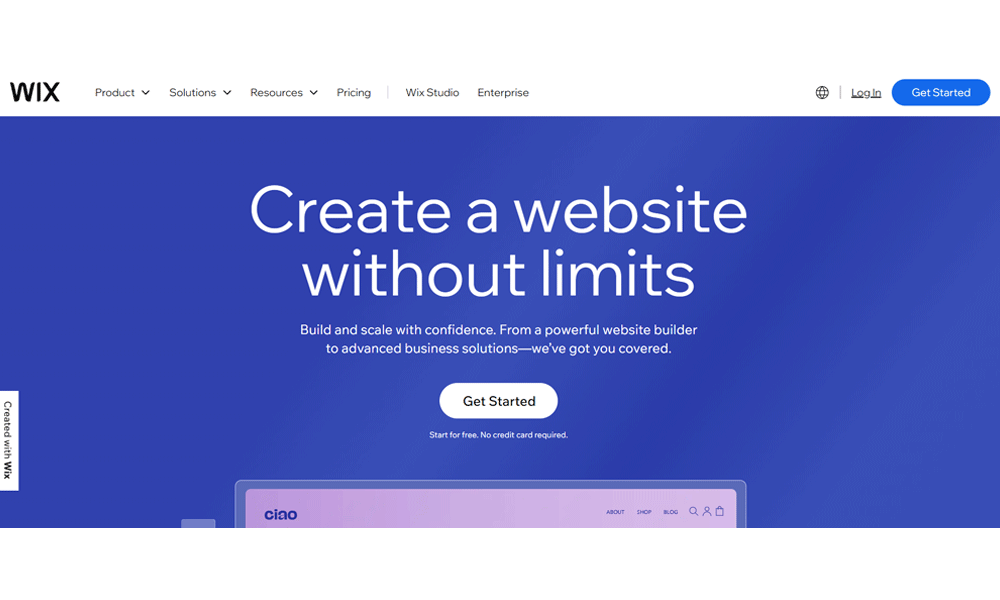
As of 2022, Wix was the third most-used CMS platform with a market share of 3.40% globally. It is a popular name in cloud-based CMS platforms and is deemed to be beginner-friendly too.
Here are some of the pros and cons of Wix CMS:
Pros:
- Creating new pages, customising them and editing content is made a lot easier with Wix’s drag-and-drop feature.
- It offers a plethora of ready-to-use templates that work across devices.
Cons:
- If you use a free version, the ads on your website will generate revenue for Wix and not for you.
- The free plan doesn’t allow you to run an eCommerce site.
- Once you choose a template for your website, it’s difficult to switch to another one.
- Data portability from Wix to another CMS is quite hectic and in some cases impossible.
Cost:
Wix offers both a free and paid plan. The free plan comes with a Wix-branded domain name and ads running 24×7 on your site. On the other hand, the paid plans start from $13 a month and are charged annually.
6. Shopify

Globally, Shopify is the second most preferred CMS platform with a whopping market share of 6.40%. Its popularity owes to the fact that you don’t need to buy hosting, install any software, or manage things like updates and backups on your own.
Shopify is one of the best CMSs out there for eCommerce platforms. Why? Let’s look at some pros and cons.
Pros:
- It offers an abundance of extensions and themes to help you customise your online store.
- You can add multiple payment options on your eCommerce site ranging from debit and credit card options to PayPal (which comes as a default).
Cons:
- If you want to add a lot of functionality to your online store, you might have to purchase an abundance of third-party apps which might escalate your economic costs.
- Also, WP offers more plugins than Shopify.
Cost:
Shopify offers a range of premium plans starting from $39 a month to $399 a month. You might get some discounts if you choose to pay annually.
7. BigCommerce
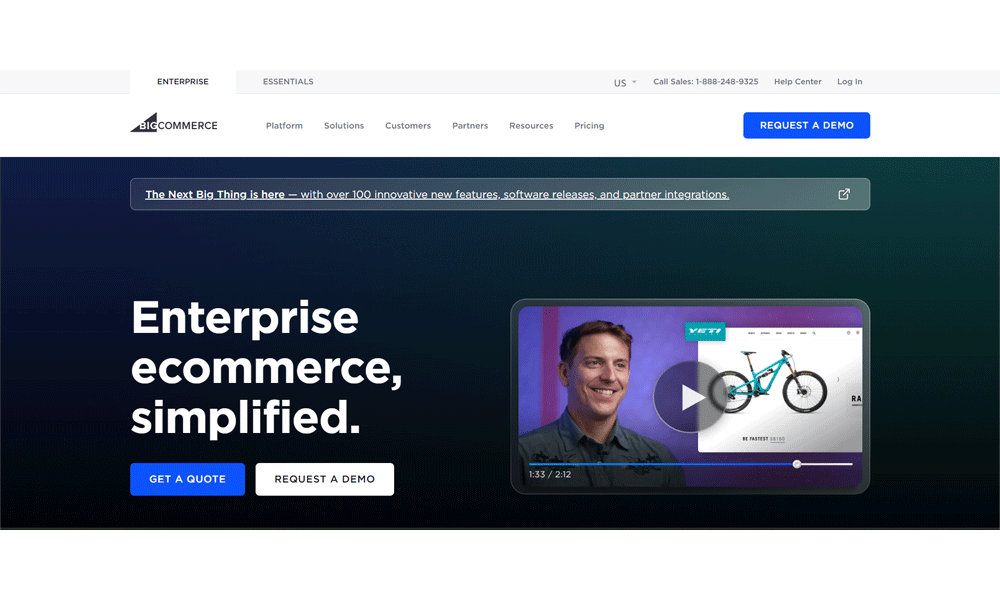
BigCommerce is your all-in-one solution for operating an eCommerce platform. Right from offering hosting and domain to handling security, caching and backups, BigCommerce does everything for you. The best part is it is also a very beginner-friendly CMS option out there.
Here are some of the pros and cons of BigCommerce.
Pros:
- It offers a trial plan for you to try your hands on the platform before making the decision.
- Also, it offers a free domain name that is branded domain name; however, by paying some amount you can customise it.
- It works pretty well with WordPress.
- It gives you the flexibility to include a bunch of payment options such as PayPal, Apple Pay, Amazon Pay or through credit or debit card options.
Cons:
- If you compare WooCommerce and BigCommerce, the former offers more themes and integration options to make your online store more exuberant than the latter.
- It has a sales threshold that means if your online store makes more than that in a year, you’ll get automatically upgraded to another premium version. This can affect your costs.
Cost:
BigCommerce offers a range of monthly subscription plans starting from $29/month to $299/month.
8. Hubspot CMS Hub
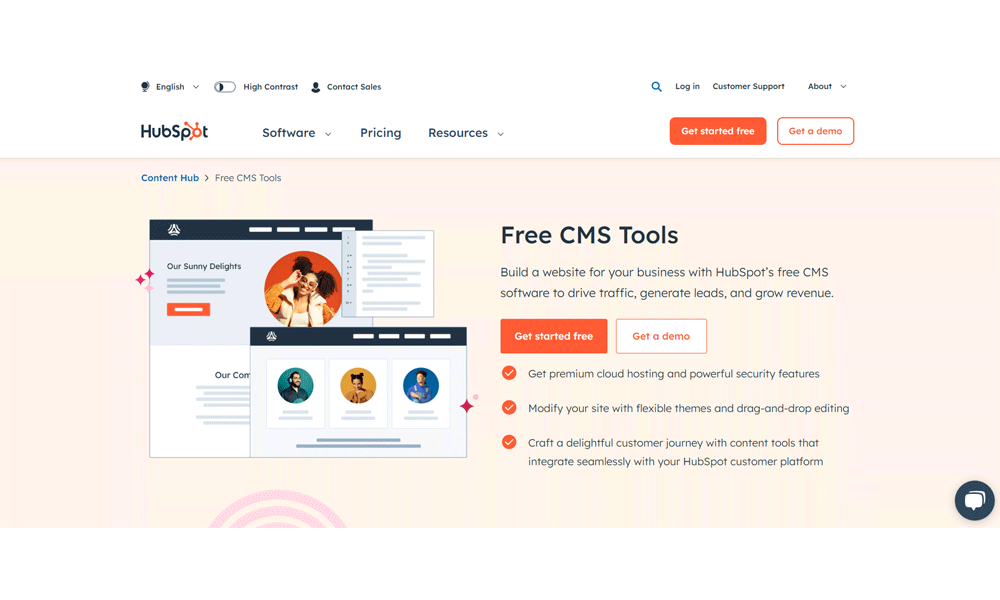
Hubspot’s CMS Hub is a beginner-friendly CMS platform that is best for eCommerce sites. From small-scale businesses to multinational companies, it can power any website and offer an all-in-one solution to operate their website.
A few pros and cons of CMS Hub are as follows:
Pros:
- It offers a bunch of features that make operating your website easy such as drag and drop feature, contact attribution, SEO tools and more.
- CMS Hub comes with in-built security features such as Web Application Firewall, global CDN and DDoS protection to keep your site safe from hackers and malware.
- The platform also allows you to curate customised web pages for specific demographic segments.
Cons:
- Also, on its own, it is not well-suited for eCommerce websites. However if you combine it with WordPress or WooCommerce, it can take your website to the next level.
Cost:
CMS Hub offers a bunch of paid plans starting from just $23 a month.
9. Magento
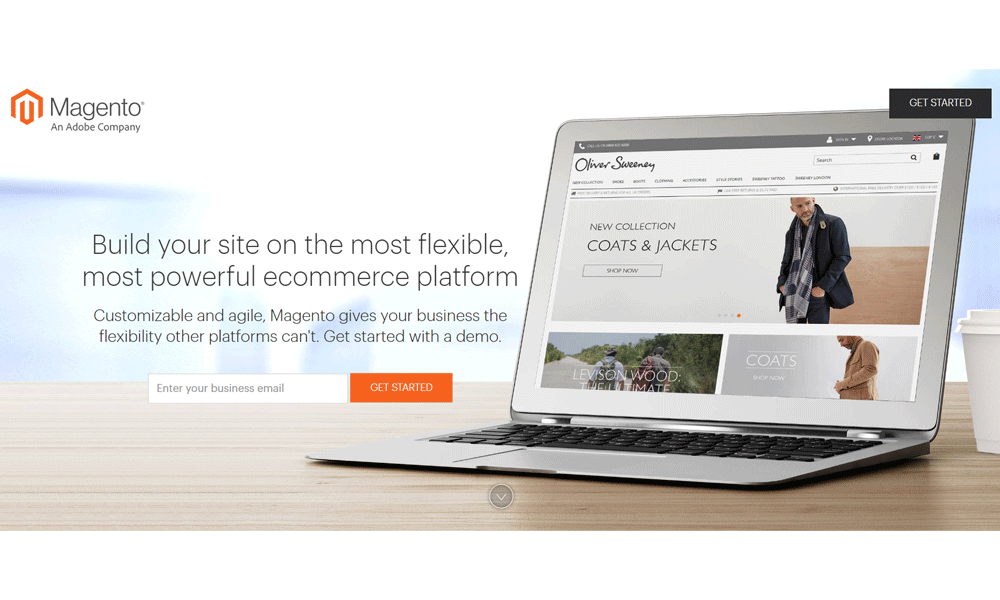
Next up on our list, is another popular open source CMS platform from the renowned company Adobe, Magento. However, just like many other open-source CMS, you would need a hosting service and a domain name to use Magento.
Following are a few pros and cons of Magento CMS:
Pros:
- It offers a lot of scope for customising your site with third-party extensions.
- With Magento, you can add an abundance of products and services without worrying about your site slowing down.
- To support your online business, it comes with in-built payment options such as PayPal, COD, and bank transfers. You may increase it as per your convenience.
Cons:
- Magento might be too overwhelming for beginners.
- The support available for Magento open source is pretty limited to online forums.
Cost:
Magento Commerce is a lot pricier as compared to any other platform on this list.
10. Blogger

As the name suggests, Blogger CMS is specifically for blogging and it has been around for more than two decades.
Here are some pros and cons of Blogger:
Pros:
- If you’re just starting, Blogger is free and may be the easiest option out there to create, publish and edit your blogs.
- There are a bunch of add-on gadgets that you can add to your blog to make it more intriguing such as contact forms.
Cons:
- This platform is exclusively for bloggers. You cannot run an eCommerce site through this CMS.
Cost:
Blogger is completely free with no hidden costs whatsoever. However, if you choose to buy a customised domain name, you’ll have to shed some bucks.
If you’re looking for a custom web development service, check out our custom website development service page today. Our dedicated team of professionals will do the magic for you and get your dream website live on the internet. Contact us today to know more!
11. Duda
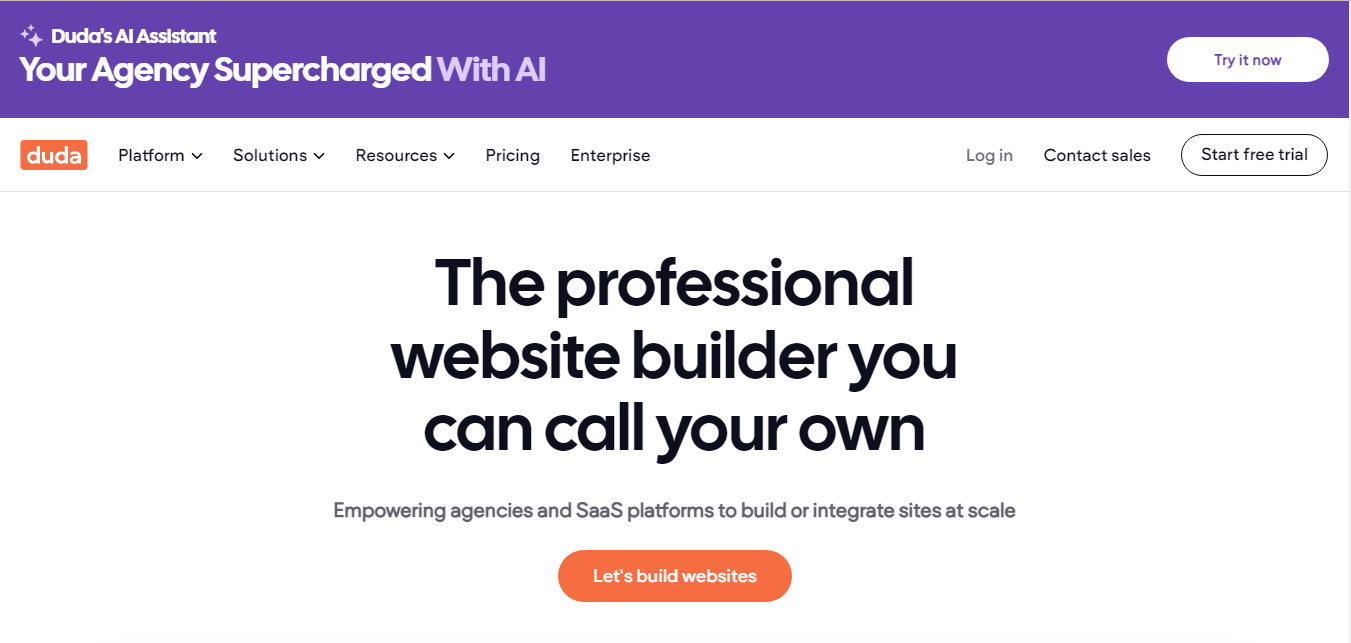
Duda is a paid CMS platform started in 2009 by a company based in California, USA. It is super easy to use and has hundreds of vibrant themes for different use cases.
Duda offers the ability to create simple websites for small businesses such as ice cream parlors, salons, etc. Users can use its pick-and-drop functionality to add predefined widgets and design the website of their choice.
It is widely used by digital marketing agencies to manage their clients’ websites easily without needing to have a dedicated team of web developers.
Here are the pros and cons of Duda:
Pros:
- It has the best core web vitals numbers compared to other CMS systems
- It offers default hosting on AWS and comes with SSL and advanced security
- Comes with own e-commerce system
- Simple to use and hence the learning curve to use Duda is small
- Requires limited tech expertise
Cons:
- Duda doesn’t offer as many customization options as WordPress and other top CMS
- The developer community is limited and hence getting access to new features would take time and money
- Doesn’t offer free domain name with the package
- The target audience is more of agencies and not end customers

